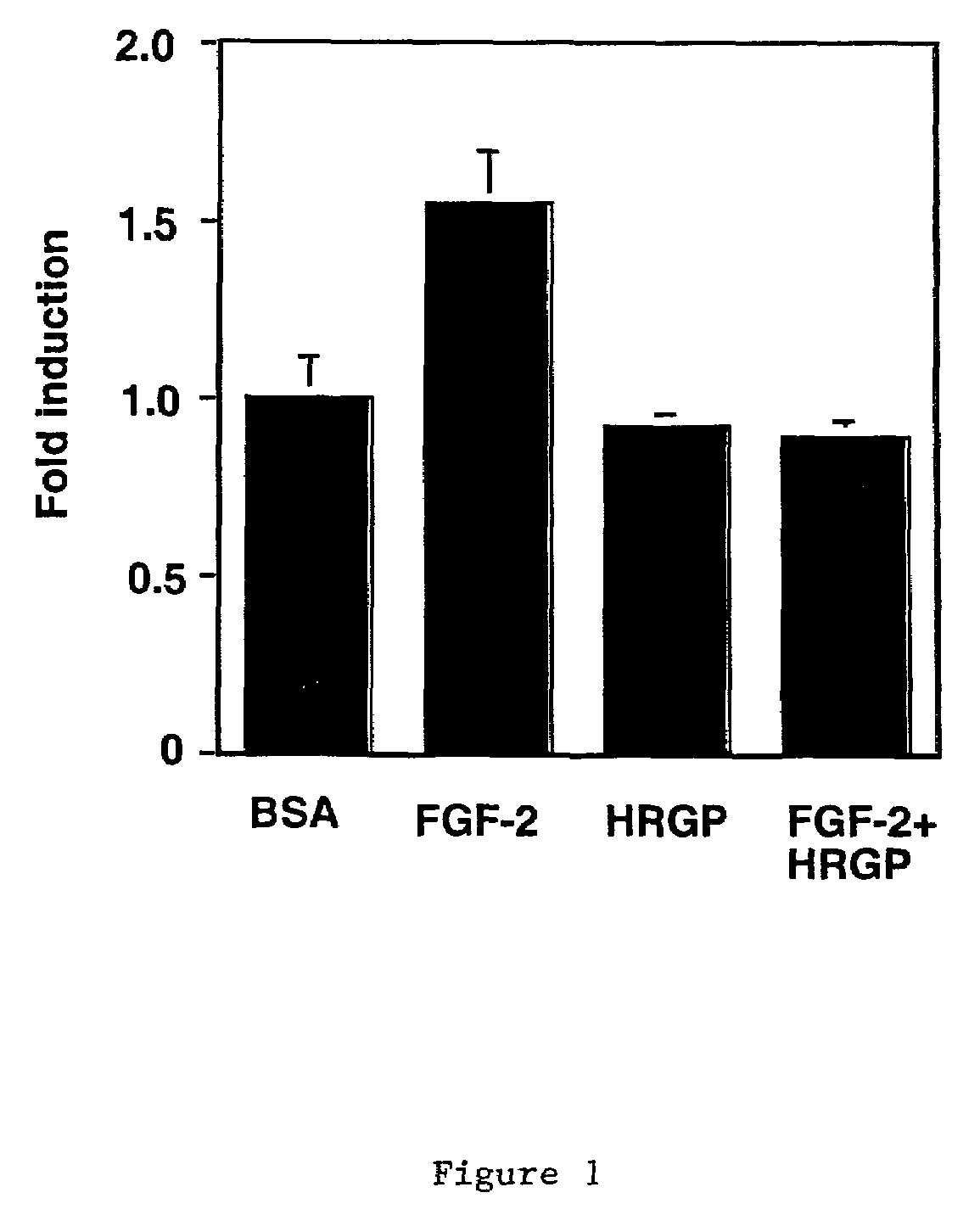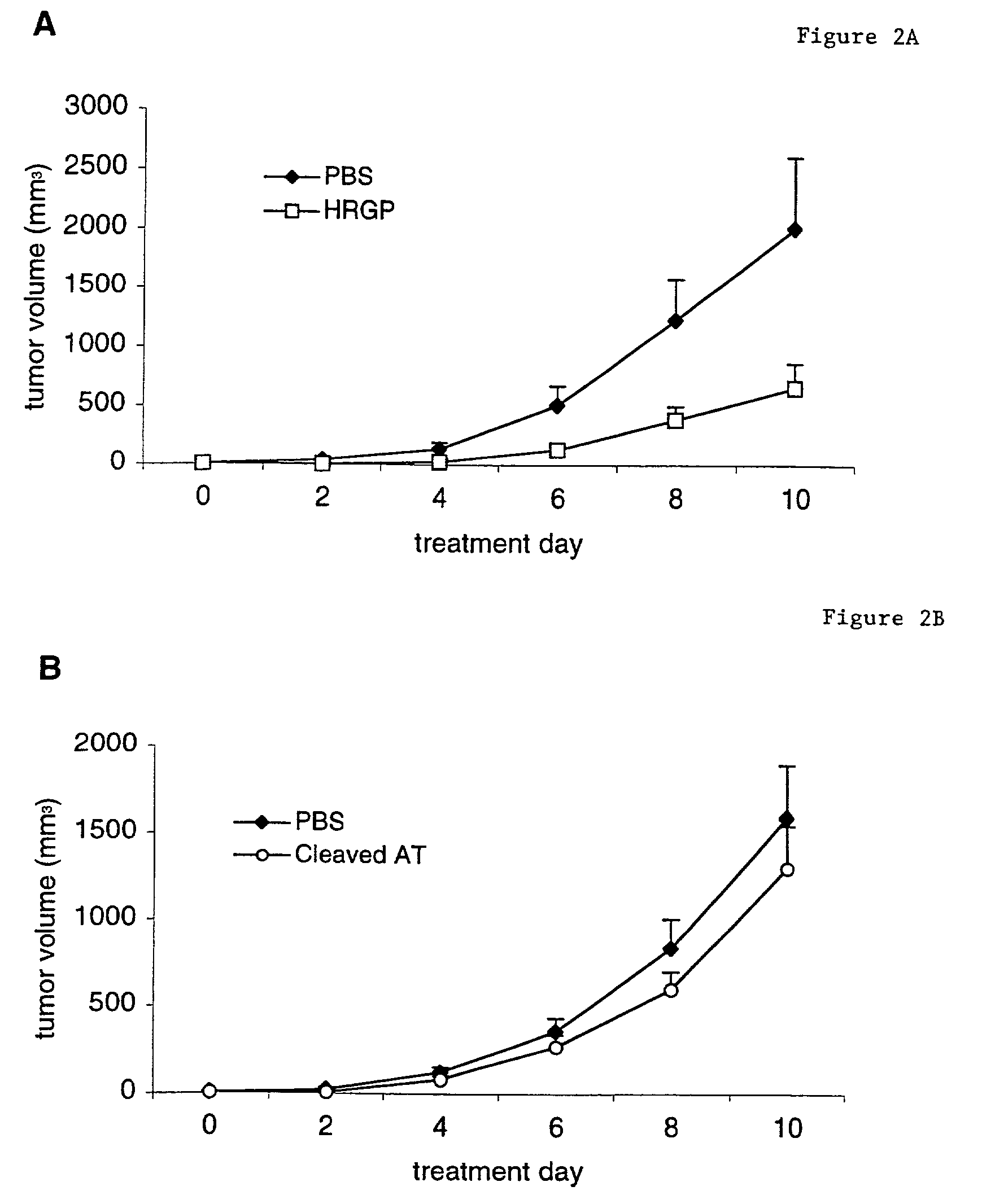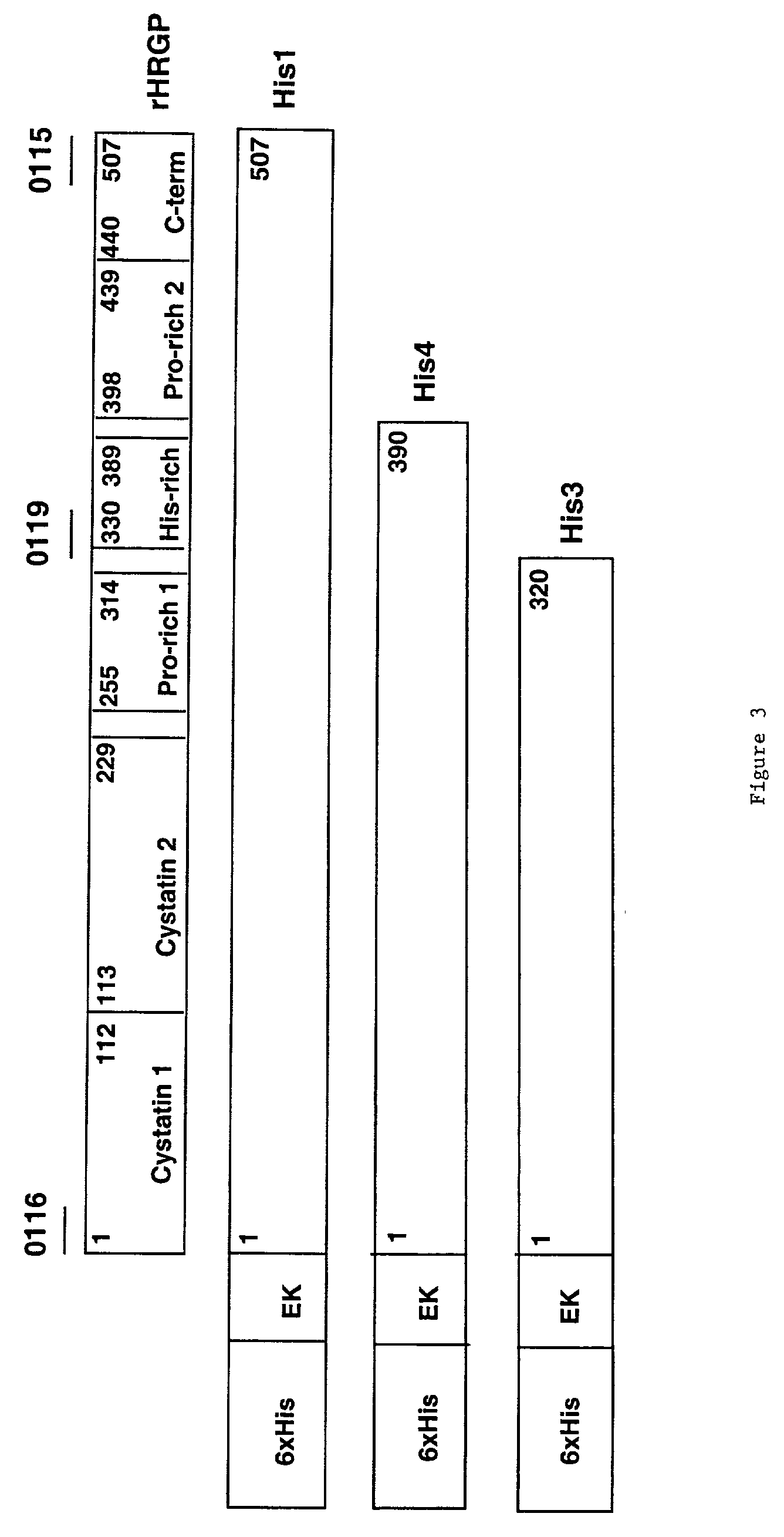Histidine-rich glycoprotein
a glycoprotein and histidine technology, applied in the field of inhibition of angiogenesis, can solve problems such as inefficient protein processing
- Summary
- Abstract
- Description
- Claims
- Application Information
AI Technical Summary
Benefits of technology
Problems solved by technology
Method used
Image
Examples
example 1
[0085]A porcine aortic endothelial (PAE) cell line overexpressing FGF receptor-1 (FGFR-1) was cultured in Ham's F12 medium supplemented with 10% fetal bovine serum (FCS). See, Wennström et al. (1992) J. Biol. Chem. 267:13749. Primary bovine adrenal cortex capillary endothelial (BCE) cells were cultured on gelatin-coated tissue culture dishes in Dulbecco's modified medium complemented with 10% FCS and 1 ng / ml FGF-2 (Boehringer Mannheim). U-343 MG human glioma cells were cultured in Dulbecco's modified medium complimented with 10% FCS. Swiss 3T3 fibroblasts were cultured in DMEM supplemented with 10% FCS. Human embryonic kidney (HEK) 293-EBNA cells were cultured in DMEM / 10% FCS.
example 2
Chorioallantoic Membrane (CAM) Assay
[0086]The conditions for the CAM assay followed were essentially as described in Friedlander et al. and Dixelius et al. See Friedlander et al. (1995) Science 5241:1500 and Dixelius et al. (2000) Blood 95:3403. Fertilized chick embryos were purchased locally and preincubated for ten days at 38° C. with 70% humidity. A small hole was drilled directly over the air sac at the end of the egg. An avascular zone was identified on the CAM, and a second hole was made in the eggshell above that area. The CAM was separated from the shell by applying vacuum to the first hole. Filter discs (Whatman Inc.) were saturated with 3 mg / ml cortisone acetate (Sigma) and soaked in buffer (30 μl for each filter) with or without FGF-2 (Boehringer Mannheim; 0.2 μg for each filter), VEGF-A (Peprotech; 0.2 μg for each filter) and purified HRGP (3 μg for each filter). The CAM was exposed after making a 1×1 cm window in the shell, and the sample was added to an avascular part ...
example 3
Endothelial Cell Migration Assay
[0087]The migration assay was performed in a modified Boyden chamber (See, Auerbach et al. (1991) Pharmacol. Ther. 51:1–11) using micropore nitrocellulose filters (8 μg thick, 8 μm pore) coated with type-1 collagen solution at 100 μg / ml (Vitrogen 100, Collagen Corp). Primary BCE cells or human glioma cells (U-343 MG) were preincubated with HRGP (100 ng / ml) for 30 min, trypsinized and resuspended at a concentration of 4.0×105 cells / ml in Ham's F12 medium containing 0.1% fetal calf serum (FCS). The cell suspension was placed in the upper chamber, and medium containing 0.1% FCS in combination with 5 ng / ml FGF-2 or 5 ng / ml platelet-derived growth factor-BB (PDGF-BB; Peprotech Inc.) and 100 ng / ml HRGP, individually or in combination, was placed below the filter in the lower chamber. FCS at 10% was used as a positive control. After 4 h at 37° C. the medium was removed and cells sticking to the filter were fixed in pure methanol and stained with Giemsa stain...
PUM
| Property | Measurement | Unit |
|---|---|---|
| concentration | aaaaa | aaaaa |
| weight | aaaaa | aaaaa |
| pH | aaaaa | aaaaa |
Abstract
Description
Claims
Application Information
 Login to View More
Login to View More - R&D
- Intellectual Property
- Life Sciences
- Materials
- Tech Scout
- Unparalleled Data Quality
- Higher Quality Content
- 60% Fewer Hallucinations
Browse by: Latest US Patents, China's latest patents, Technical Efficacy Thesaurus, Application Domain, Technology Topic, Popular Technical Reports.
© 2025 PatSnap. All rights reserved.Legal|Privacy policy|Modern Slavery Act Transparency Statement|Sitemap|About US| Contact US: help@patsnap.com



